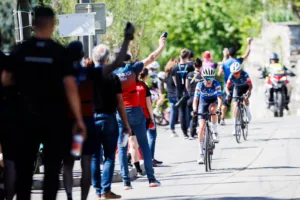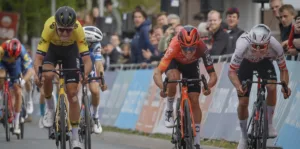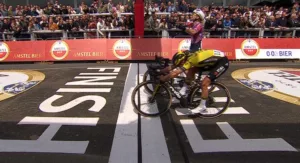For a newbie cyclist, you’re often cycling on your own before you join a club or a group. The benefits of cycling with others are huge though, including speed, social, knowledge and training aspects.
Table of Contents
ToggleEveryone knows about the giant peloton in the Tour de France and how riders at the back of the huge bunch are saving energy. If you follow just 1 other rider, you can save around 30% of your energy. Imagine being able to go 30% further on your ride just from having someone to ride with!
Riders with others requires some communication and good practice however. The potential for a crash is higher than riding solo but some of the risks are easily avoided by knowing how to act.
Group Types
Group riders came in all shapes and sizes and there are key differences between all of them. Some will be more common than others and a couple you won’t have to worry about until you want to start going as fast as possible.
Peloton
This will be the most common group type and you’ve probably already done it without putting a name to it. Any basic group where you’re following others, either whilst singled out or paired up will be a form of peloton. Pretty much all club rides will use this as their basic formation as it’s a solid way of keeping riders of all levels together in the safest fashion. It’s also easier to move from a paired up peloton to a single line in the face of oncoming traffic.
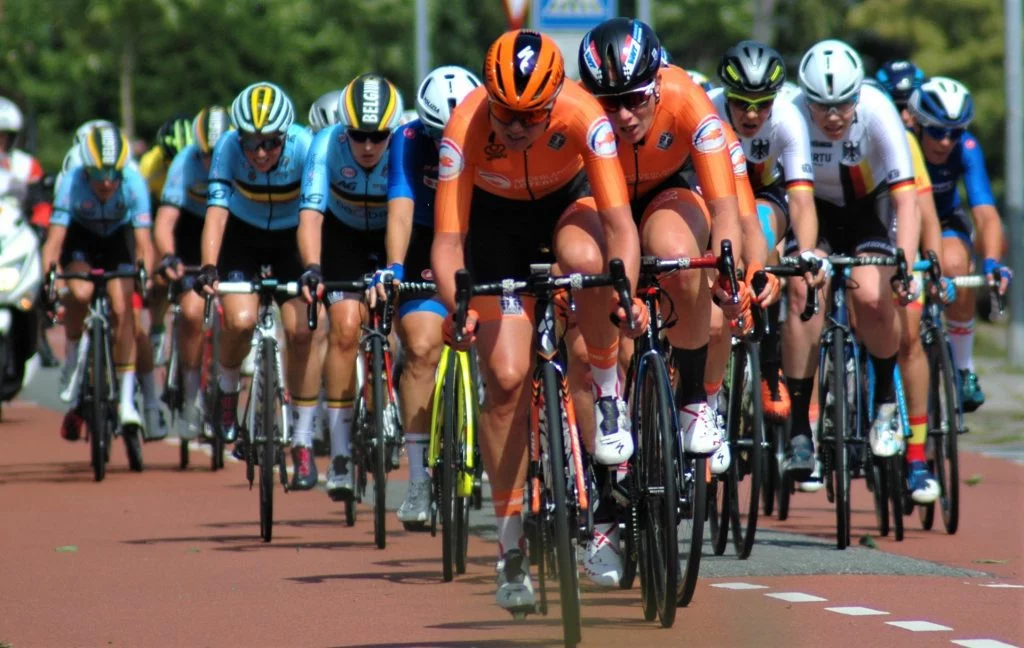
Paceline
A singled out peloton becomes a form of paceline but the difference is in the intent. With a paceline riders will spend a short amount of time on the front before pulling off, easing off down the side of the group and tacking onto the back of the line. If you’ve ever seen a team time trial, this is the move that they complete.
The short turns should be around 10-30 seconds each with stronger riders reaching the top end of that timescale and weaker riders the opposite. The advantage to this group formation is that it encourages the group to share the load fairly equally amongst themselves, particularly whilst going fast. Most riders are quite happily able to do a few seconds on the front at pace before earning themselves a rest.
Chain gang or ‘through and off’
The chain gang often makes up the quickest club rides. It gets its name from its similarity to a bike chain in motion. In theory the group is always rotating and each cyclist acts as a link in the chain. It’s quite similar to a paceline in action, however you spend less time at the front of the group and are constantly changing position from back to front and to the back again.
It’s good practice to shout ‘Last!’ as you rotate to the back of the group and move across. This allows the rider passing backwards to know that they’re able to move across soon. This helps reduce the gaps in the chain gang and keep it working smoothly. It’s also important to not speed up when you hit the front as well as this will create surges and reduce the efficiency of the group.

Echelon
Rarely used in the UK except by experienced groups, it’s a great technique to use in races and when you know what you’re doing! It’s something learnt almost as a rite of passage in windy countries like the Netherlands.
It comes into use when riders are being hit by crosswinds. In this situation the best draft available to following riders shifts from following the rear wheel to the side of the rider in front. It’s tough to have a full line of riders side by side across the road, particularly without attracting the ire of British drivers. They’re a great tactic in races though where some of the most famous breaks including Grand Tour favourites have taken place.

Group Etiquette
Each of the group types above help riders to go faster in different situations. Some riders will be more comfortable riding in different ways as well. If you’re not used to riding in a certain way, normally you can let someone know and they’ll help you out as you go. If you don’t tell someone, you’ll still get told what to do, but it’ll probably involve some shouting! A couple of good practice techniques can help keep the group safe.
Don’t overlap wheels
A simple one that many don’t realise the potential danger of, until it goes wrong. Overlapping wheels increases the risk of a crash happening. As the rider in front swerves to avoid a hazard, as is their right, your overlapped front wheel will take the hit and you’ll be the one to hit the ground. Anyone behind you is then in trouble too.
It’s easily done and the best way to resolve it is to just ease off, don’t apply the brakes, and let your wheel come backwards relative to the wheel in front.
Keep it steady
Something mentioned above for the quicker groups is to not surge when you hit the front of the group. Riders pulling off the front are easing off and going backwards so don’t need to be overtaken. What happens behind when you surge is you create a concertina of gaps which riders then have to accelerate to close up. All in all, it wrecks the group cohesion. Luckily someone will be quick to tell you if you are surging!
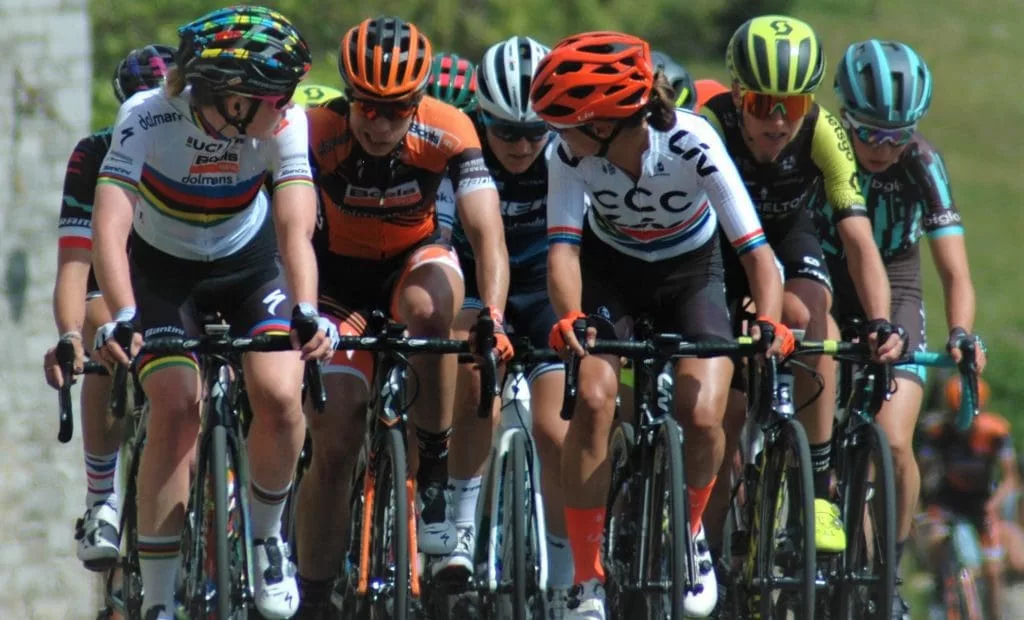
Always look before you move
Something you should be doing already to to look before making any moves. This becomes even more important when in a group and riding closer to over people. Sudden movements will scare other riders as the predictability of the group gets called into question. Looking over a shoulder is an important skill. Just to double-check there isn’t already a rider in the spot you wish to occupy. If there is a rider there, often a little indication with your hand will let them know your intention. Then they’ll usually ease off a touch to open up a gap for you. Good luck trying that in a race situation though! As ever, communication is key.
Hold your line
Another bit of good practice that increases predictability is holding your line, particularly when going into corners. Its tempting to take the racing line when taking a corner fast. However, if you’ve got a rider on your inside you’ll chop them up, reduce their room to corner and maybe cause a crash. Often if you do this, you’ll be told pretty quickly on a group ride. It’s just something that helps the group maintain its shape in a safe, controlled fashion.


